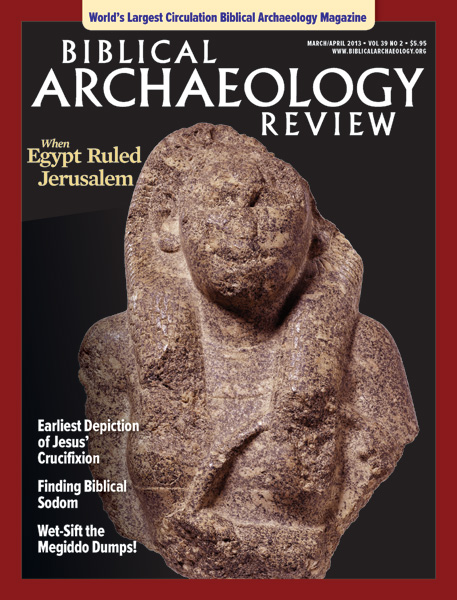
When Was Jesus Born?
Let me add a footnote to Suzanne Singer’s report on the final journey of Herod the Great (Strata, BAR 39:02): She gives the standard date of his death as 4 B.C. [Jesus’ birth is often dated to 4 B.C. based on the fact that both Luke and Matthew associate Jesus’ birth with Herod’s reign—Ed.] Readers may be interested to learn there is reason to reconsider the date of Herod’s death.
This date is based on Josephus’s remark in Antiquities 17.6.4 that there was a lunar eclipse shortly before Herod died. This is traditionally ascribed to the eclipse of March 13, 4 B.C.
Unfortunately, this eclipse was visible only very late that night in Judea and was additionally a minor and only partial eclipse.
There were no lunar eclipses visible in Judea thereafter until two occurred in the year 1 B.C. Of these two, the one on December 29, just two days before the change of eras, gets my vote since it was the one most likely to be seen and remembered. That then dates the death of Herod the Great into the first year of the current era, four years after the usual date.
Perhaps the much-maligned monk who calculated the change of era was not quite so far off as has been supposed.
Professor of Physics
Oglethorpe University
Atlanta, Georgia
The Length of Female Fingers
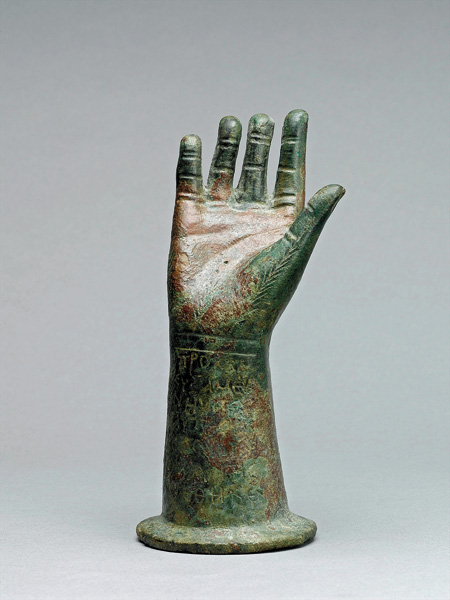
I’ve subscribed to BAR for about 15 years, often wanted to chime in, but never got stirred up enough about it ’til just now.
The letter “It’s a Female Hand” (Q&C, BAR 39:02) propelled this retired philosophy professor up off her couch to her computer to fire off this reply:
The letter’s claim that a bronze artifact can be identified as a female hand because its index finger is longer than its ring finger goes way overboard.
The letter writer [James Ripka] says that “finger length has been shown to determine sex.”
NOT TRUE.
Ripka must be aware on some level that it’s not true, because he goes on to say that “females tend to have both fingers of the same length or the index finger longer.” That word “tend” is crucial, meaning that while most women do, some do not.
A glance at my own hands demonstrates that at least one grandma’s index fingers are slightly shorter than her ring fingers. So if I had modeled for the pictured bronze hand (WorldWide, November/December 2012), an overzealous interpreter might conclude that the model was male!
The most the letter writer can plausibly claim, even within the terms of his own wording and susceptibility to some controversial studies, is that the bronze hand might be female—but we knew that all along.
Even a fast online search of the relevant scientific literature shows that this is still an ongoing, hotly debated, studied and tested issue.
When I taught logical thinking at Hunter College, one of my first tasks each semester was to discuss the various degrees of confidence we should have in our beliefs, and why. Retired for 15 years now, I don’t get a chance to expound on that important subject too often anymore. Thanks for the opportunity.
Nyack, New York
Did a Male Give Birth?
After 56 years of being convinced that I am female, I am astonished to learn that having ring fingers that are longer than my pointer fingers makes me, in fact, male. I am sure that my husband and the obstetrician who delivered my two children will be stunned as well.
Clearwater, Florida
Don’t Wait for Scholars to Agree
Re: “What to Do with Unprovenanced Artifacts—Publish or Perish?” (First Person, BAR 39:02).
So major scholars take opposing views on how to treat objects from the antiquities market. Are we surprised? My observation is that major scholars take opposing views on most discoveries and interpretations of discoveries. Recent example: Eilat Mazar’s reporting on her work on David’s Palace and Nehemiah’s Wall and the opposition heaped on her by some other scholars (March/April 2009 and January/February 2006). If publication of discoveries was withheld until all scholarly objections were satisfied, very little would ever be reported to the interested public.
Chetwynd, British Columbia
Refusal to Publish Is Censorship
You still very kindly send me BAR, which I rejoice in. I wholeheartedly support your views on publishing unexcavated objects. Otherwise, scholarship is being subjected to a form of censorship, which is quite wrong.
Emeritus Lincoln Professor of Classical Archaeology & Art
University of Oxford
Oxford, United Kingdom
Geographically Puzzled
The article on Sodom (“Where Is Sodom? The Case for Tall el-Hammam,” BAR 39:02) was well reasoned and provocative, but it left me geographically puzzled.
It is true that as Abraham and Lot looked down from the area near Ai and Bethel on to the Plain of the Jordan, Sodom would be north of the Dead Sea. The other long-suggested location of Sodom south of the Dead Sea would not be in the Plain of the Jordan.
However, the Bible says as the angels were taking Lot and his family from Sodom, he wanted to go to Zoar rather than the mountains since it was so close. On my Biblical map, Zoar is south of the Dead Sea. Is Zoar mislocated or were there two cities named Zoar?
Also, the article said nothing about the event that left the layer of ash and heat-damaged items in 1600 B.C., both north and south of the Dead Sea. I know God is capable of sending fire from heaven, but I think he prefers to use the universe he created to do that type of work for him. Are there any clues?
Holt, Michigan
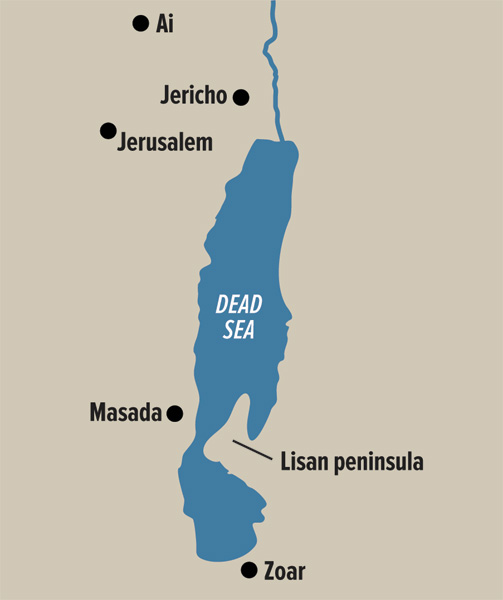
Steven Collins responds:
The location of Zoar south of the current Dead Sea, as is typically pictured on Bible maps (as shown above), is wrong. This location is based on the sixth-century C.E. Madaba mosaic map, which does shows Zoar south of the Dead Sea. But at that time the Dead Sea was at a historic low. In the sixth century, the Dead Sea was only half as large as it was later (until recently when the southern half again dried up). In times of low water levels, the southern half of what we know as the Dead Sea dried up. So “south of the Dead Sea” in the sixth century (as portrayed on the Madaba map) is not the same as “south of the current Dead Sea.”

The southern half of the Dead Sea, even when it is full, is very shallow, unlike the deep northern basin. Even when the southern half is inundated, a tongue of land, or peninsula, juts out into the southeastern part of the sea. This tongue is known as the Lisan (which means “tongue” in Hebrew). It is shown on all modern maps of the Dead Sea. But on the Madaba map, the tongue isn’t there, which is one way we know that the Dead Sea included only the northern half at that time.
So, south of the Dead Sea at the time of the Madaba map doesn’t mean the same thing as south of the Dead Sea in the modern period.
And nothing in the Bible places Sodom south of the Dead Sea. Indeed, careful comparison and analysis of Deuteronomy 2:4–5, 9, 34:1–3 and Joshua 13:8–28 reveals that Zoar was the southern geographical marker of the Reuben/Gad Transjordan tribal allotment located at the Arnon Gorge (Wadi Mujib), as well as the northern border of Moab. Both Moab and Edom were off limits to Israelite conquest (by divine decree), making the traditional location of Zoar on the border between Edom and Moab impossible! It’s also conceivable that Zoar was a tent-enclave (Zoar means “insignificant” in Hebrew) that moved around relative to the purposes of its clan leaders. The southern location of Biblical Zoar has to be wrong. (For details, see Steven Collins and Latayne Scott, Discovering the City of Sodom [New York: Howard Books, 2013] ).
As for “the event,” let me just say that we continue to find significant evidence that some kind of “airburst” (of cosmic origin) occurred over the kikkar (the area of the cities of the kikkar, including Sodom) sometime between 1750 and 1650 B.C.E. The magnitude of the event was somewhere between the Tunguska, Siberia, airburst of 1908 and the one in 2013 that exploded over southern Russia. All of the phenomenological language of destruction preserved in Genesis 19 is consistent with this kind of cosmic impact. The evidence on the ground also supports such a cataclysmic, targeted destruction. (See also my comments to the following question.)
Was Hammam Heat Caused by a Meteor?
Could Dr. Collins elaborate more on what destroyed Tall el-Hammam? What could cause the devastation he describes (especially as mentioned in his endnote 9)? Although some of the science is beyond me, is Dr. Collins implying that the cause was not a fire that lasted for days, but a sudden flash of heat so hot as to turn pottery surfaces into glass? With the recent news from Russia [the meteor that exploded over Russia in February 2013], might it have been a “heavenly” body?
Regardless, excellent detective work.
Fredericksburg, Virginia
Steven Collins responds:
As noted in my previous answer, textual and scientific evidence points in the direction of a cosmic airburst. Indeed, if the February 2013 event over Russia had been slightly larger or had entered on a steeper trajectory, the physical damage and loss of human life would have been cataclysmic.
Based on the hard evidence at and around Tall el-Hammam, we believe that the disintegration of a cosmic body (comet fragment or small asteroid?) put an end to the sophisticated Bronze Age civilization of the Jordan Disk (kikkar) between 1750 and 1650 B.C.E. (We’re still working with the diagnostic ceramics and other dating methods.)
According to laboratory analysis, the heat index required to produce desert glass and melt the surface of fired pottery in the manner we’re observing exceeds 8,000 degrees Kelvin, or about 14,000 degrees Fahrenheit. This is commensurate with that of cosmic airbursts.
Similar Staurogram Inscribed on Cave Wall
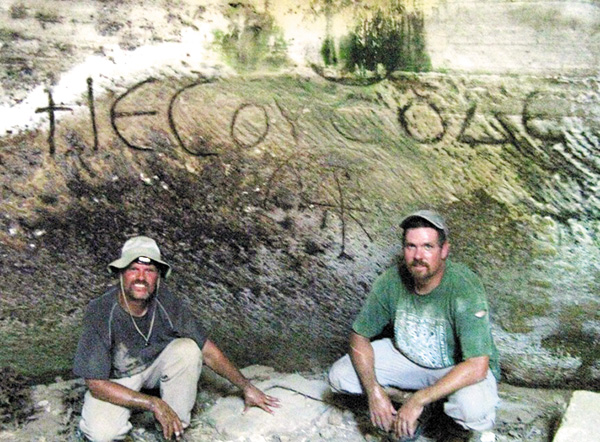
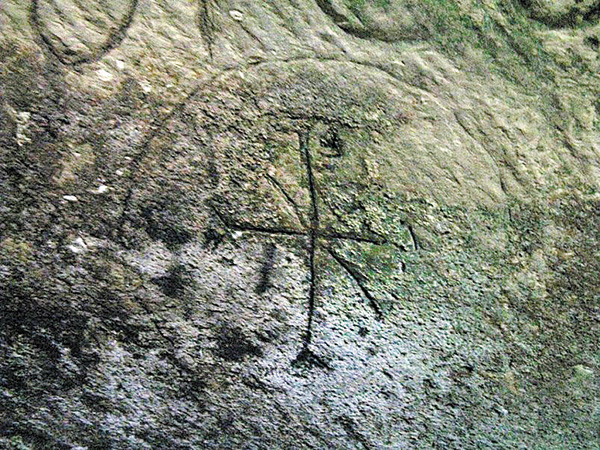
I look forward to receiving every issue of BAR. I was especially interested to read in the March/April 2013 edition the article on “The Staurogram: Earliest Depiction of Jesus’ Crucifixion,” by Larry W. Hurtado. As I read the article and viewed the photos of early staurograms, I remembered finding a similar inscription on a cave wall at Khirbet Beit Loya in Israel. After further investigation, we were told the inscription was ancient Greek and in essence said, “Jesus Christ was here.” Can you tell me if this is a correct translation of what we found and how early this ancient staurogram symbol might date?
Ephraim, Utah
Larry Hurtado responds:
The inscription reflects some spelling variants, suggesting a less-than-learned person made it. The Greek for “Jesus” is spelled with an epsilon where there should be an eta, and the “hode” is perhaps a misspelling of the Greek word for “hither/here,” an initial omicron where there should be an omega.
The “hooked” rho in the christogram device suggests a date well into the Byzantine period.
Wet-Sifting: It’s in the Details
The article in the March/April issue of BAR was very interesting (“Wet-Sift the Megiddo Dumps!”). However, being a novice I would like to know more details about “wet-sifting.”
Clancy, Montana
Wet-sifting is a process whereby buckets of dirt from an excavation or construction site are emptied onto a framed screen and rinsed with running water. The dirt falls through the screen and artifacts remain on the surface of the screen. Wet-sifting is described as being similar to panning for gold.—Ed.
Beware of Circular Argument in Forger Insight
Phil Norton’s letter to the editor (“Forgers Use Cost-Benefit Analysis,” BAR 39:02) is valid up to a point. However, don’t lose sight of a certain circularity of his argumentation: The more unlikely seeming a hypothetical forger’s creative strategy is, the more he is thereby proved to be a potential master forger, and the more suspicious we should be. The circularity is brought out, I think, if (as a mental experiment) we progressively escalate the degree of unlikelihood, imputed mastery and resulting suspicion. By the syllogisms implicit in Norton’s approach, no degree of unlikelihood can ever carry any net probative weight whatsoever.
Adjunct Professor
George Mason University
Fairfax, Virginia
Desert Queen Appears in Photo
In your March/April issue (Strata: “New Online Access to Records from British Mandate Palestine”) you published a 1921 photograph taken in Jerusalem that includes Winston Churchill and his wife; Herbert Samuel, British Commissioner for Palestine; the Emir Abdullah of Transjordan; and, in the front row amidst Arab officers, an elegant British woman. This is undoubtedly Gertrude Bell, a single woman who had an extraordinary life as an explorer, excavator/archaeologist and mapmaker in the Middle East, obtaining the loyalty and friendship of Arab leaders, and with her connections and information assisted T.E. Lawrence. After World War I she played a major role, through her friendship with Faisal I of Iraq, in creating a modern Middle East.
There is an excellent book by Janet Wallach titled Desert Queen,a about this extraordinary woman.
Fort Worth, Texas
More to Come on the Bethesda Pool
I was surprised to read a review (ReViews: “After 18 Years, Still Waiting …” BAR 39:02) by Urban C. von Wahlde on a book supposedly written by myself and Claudine Dauphin. This is news to me. The special edition of Proche-Orient Chrétien (2011) on the Bethesda Pool excavations was in fact edited by Father Frans Bouwen of the White Fathers’ Community in Jerusalem. I was only one of six authors of articles in this collection, which included C. Dauphin, C. Arnould-Béhar, S.A. Kingsley, A. Berman and O. Abd Rabbo. Von Wahlde says he has been waiting for the report on the site for 18 years, but BAR readers should be aware that the Bethesda Pool excavations were conducted for more than one hundred years, between 1862 and 1967, so scholars have been waiting for much longer than that. It is no easy task putting together a final report, especially when there are no funds available for the publication project. I can assure him that there is no procrastination, but I am forced through necessity to work on the material in my own free time. Contrary to what von Wahlde has written, I can confirm that there will be a final publication of these amazing finds, and that I will be the author of one of the volumes.
Head, Archaeology Department
University of the Holy Land
Jerusalem, Israel
Professor Urban C. von Wahlde responds:
I thank Shimon Gibson for his clarification regarding the editorship of the Proche-Orient Chrétien (POC) volume. My information was based on comments in his footnote 29 of his article in another POC volume,1 where he describes Professor Dauphin as “Project Director” and himself as “Field Director.” In that sense I thought it was a joint project. Moreover, while the study of the coins and the mosaic are certainly significant, his study of the nature and the history of the pools themselves will have the widest significance.
In that same footnote in the 2005 article, Gibson wrote: “The general results of this project will shortly be published in a supplement to Proche-Orient Chrétien and the full results will appear in a two-volume monograph which is now in preparation.”
I must admit that, in what Gibson described as the “general results of the project,” I was expecting something more than appeared in 2011. In 2005, Professor Gibson published an excellent article on the pools as mikva’ot. I was hoping for something as good as that. Consequently I, at least, was disappointed with his 2011 contribution.
Professor Gibson’s clarifications are helpful and I am happy to hear that he will indeed be the author of one of the volumes of the final report.

